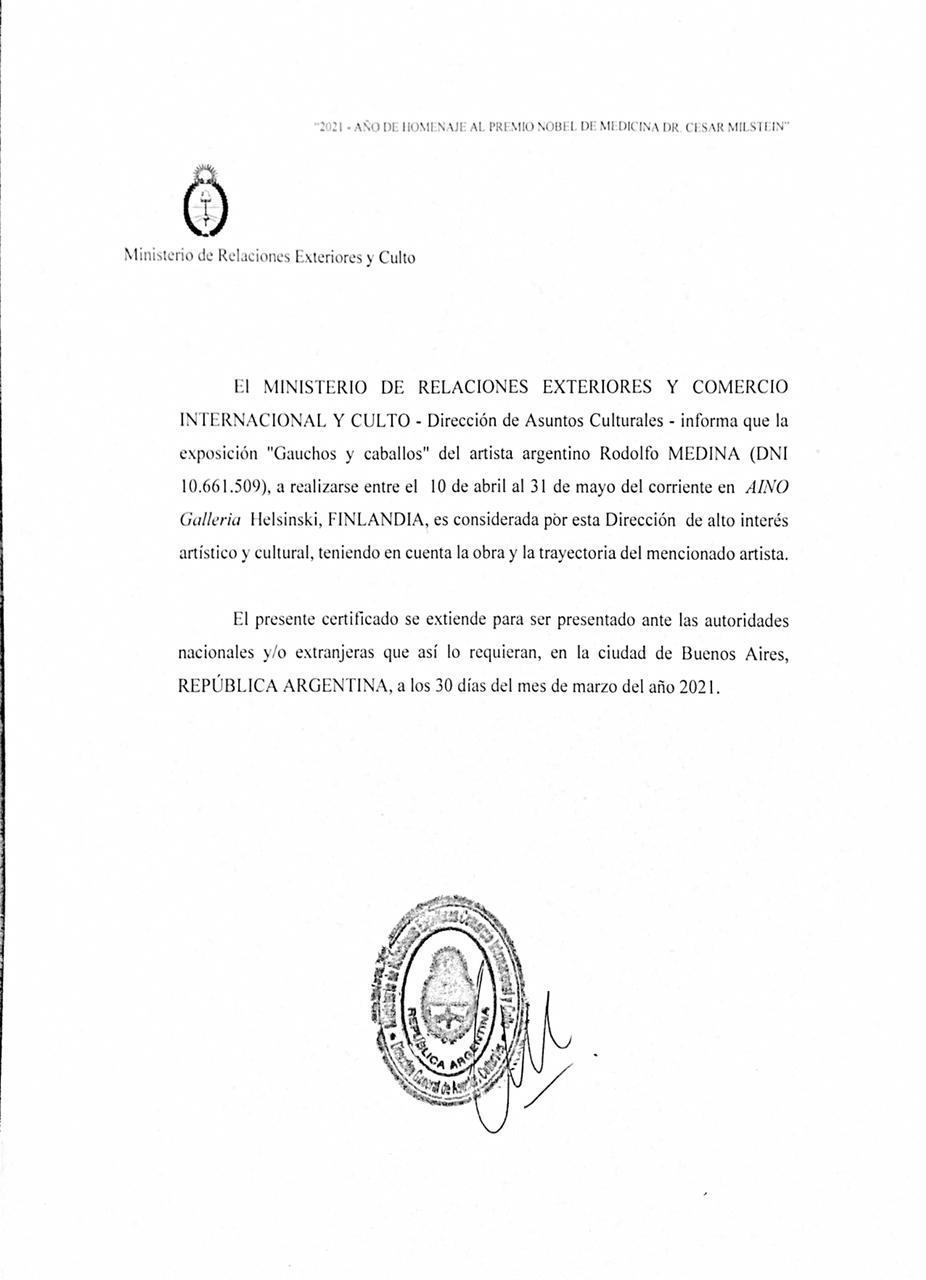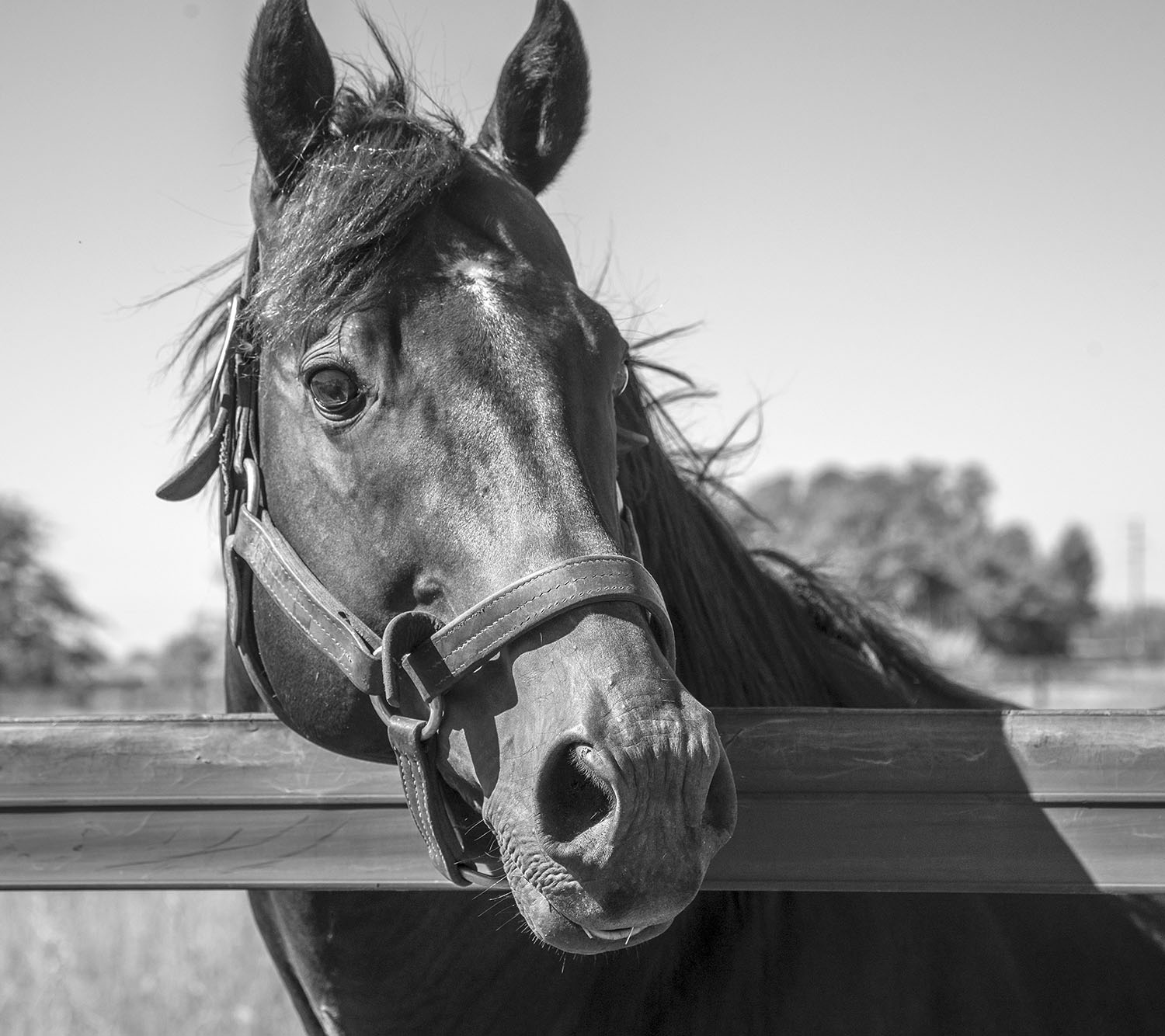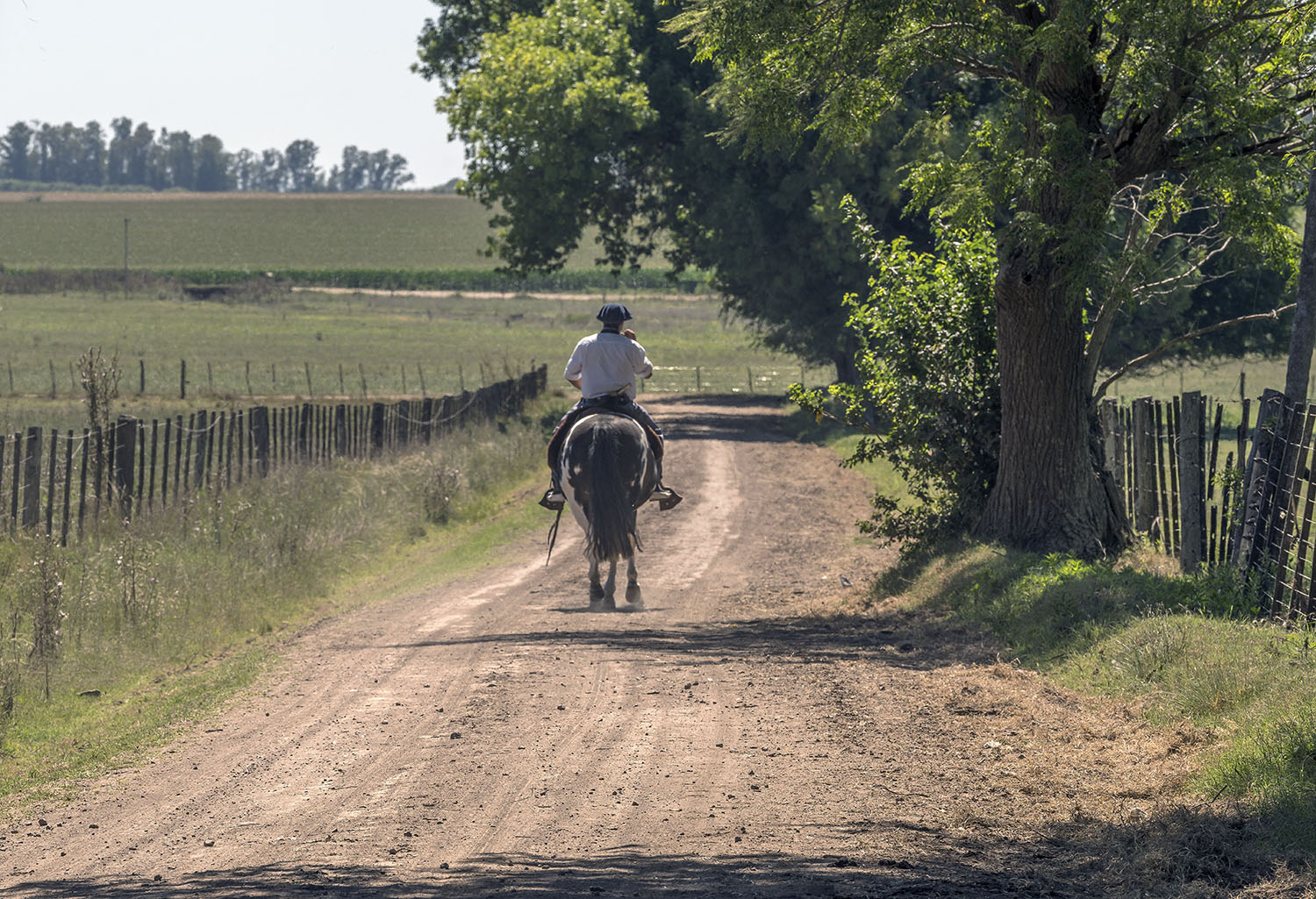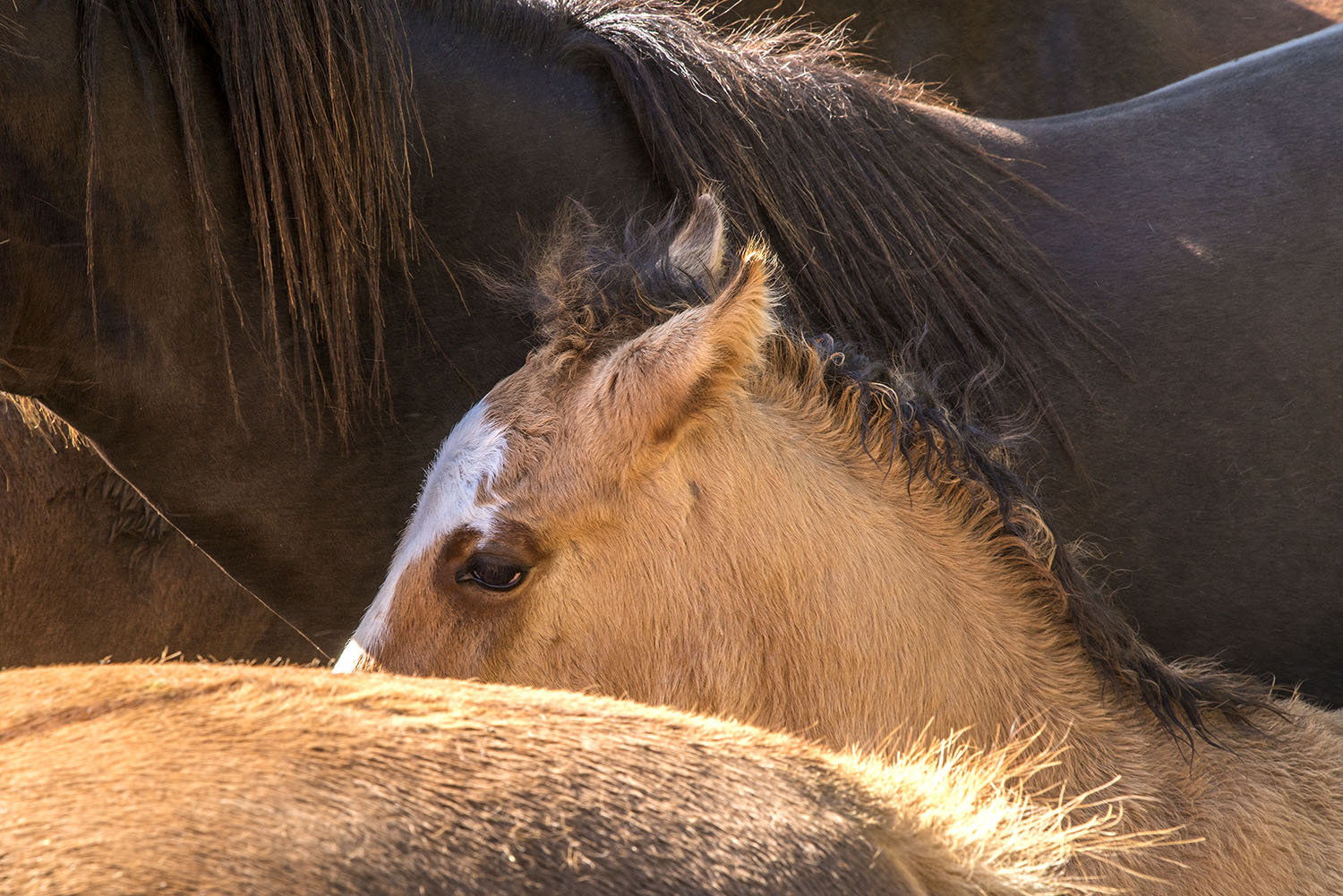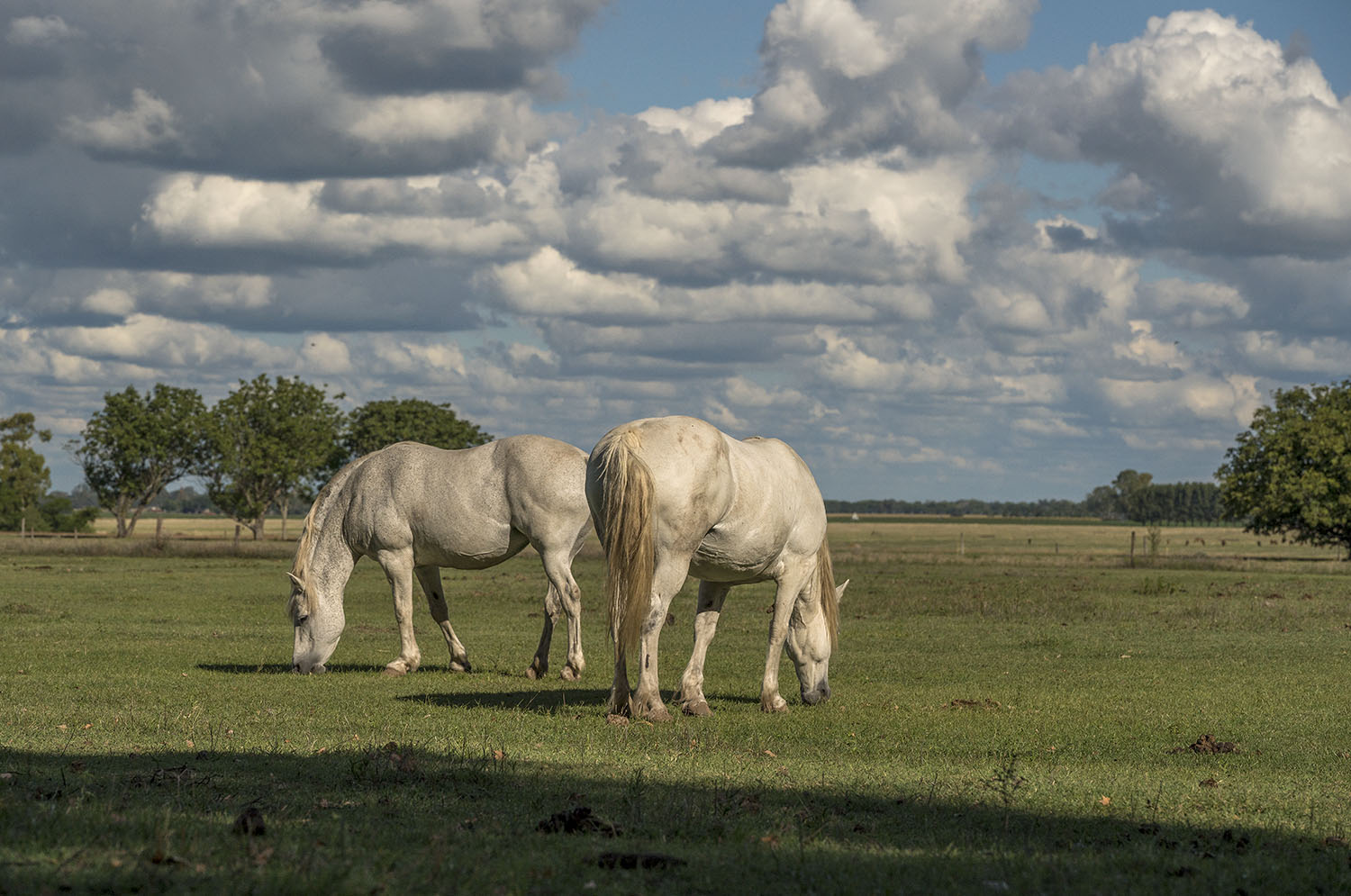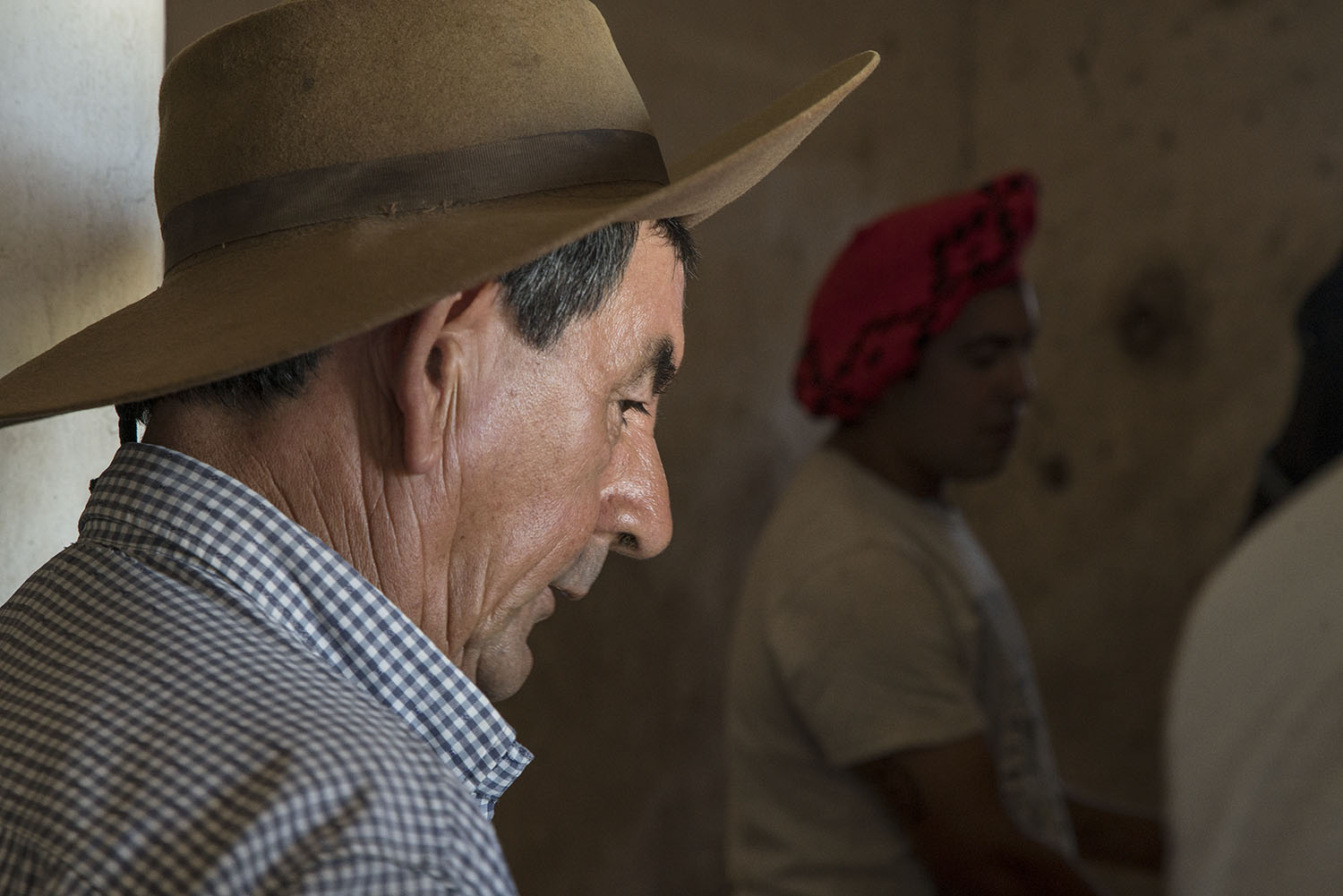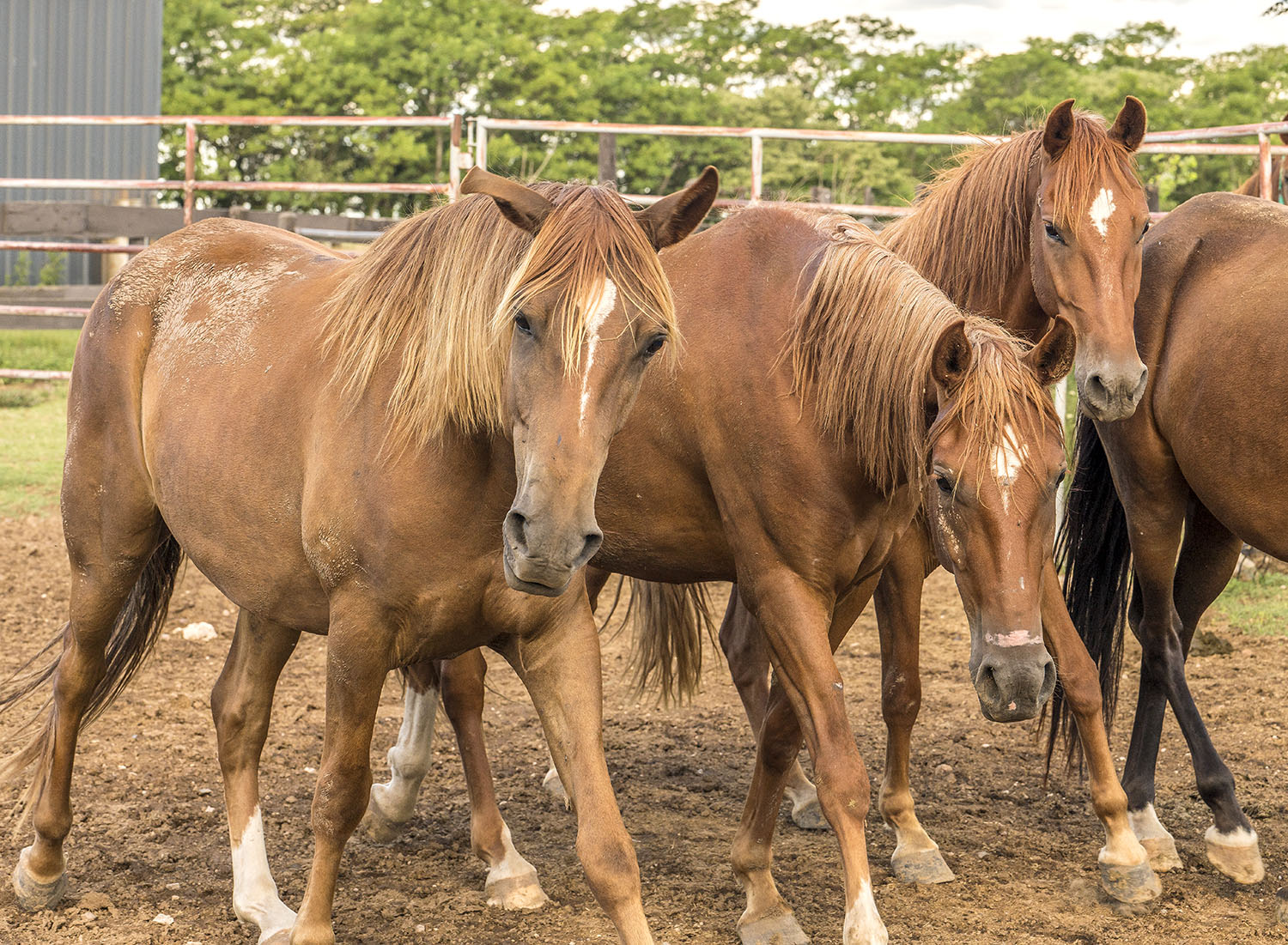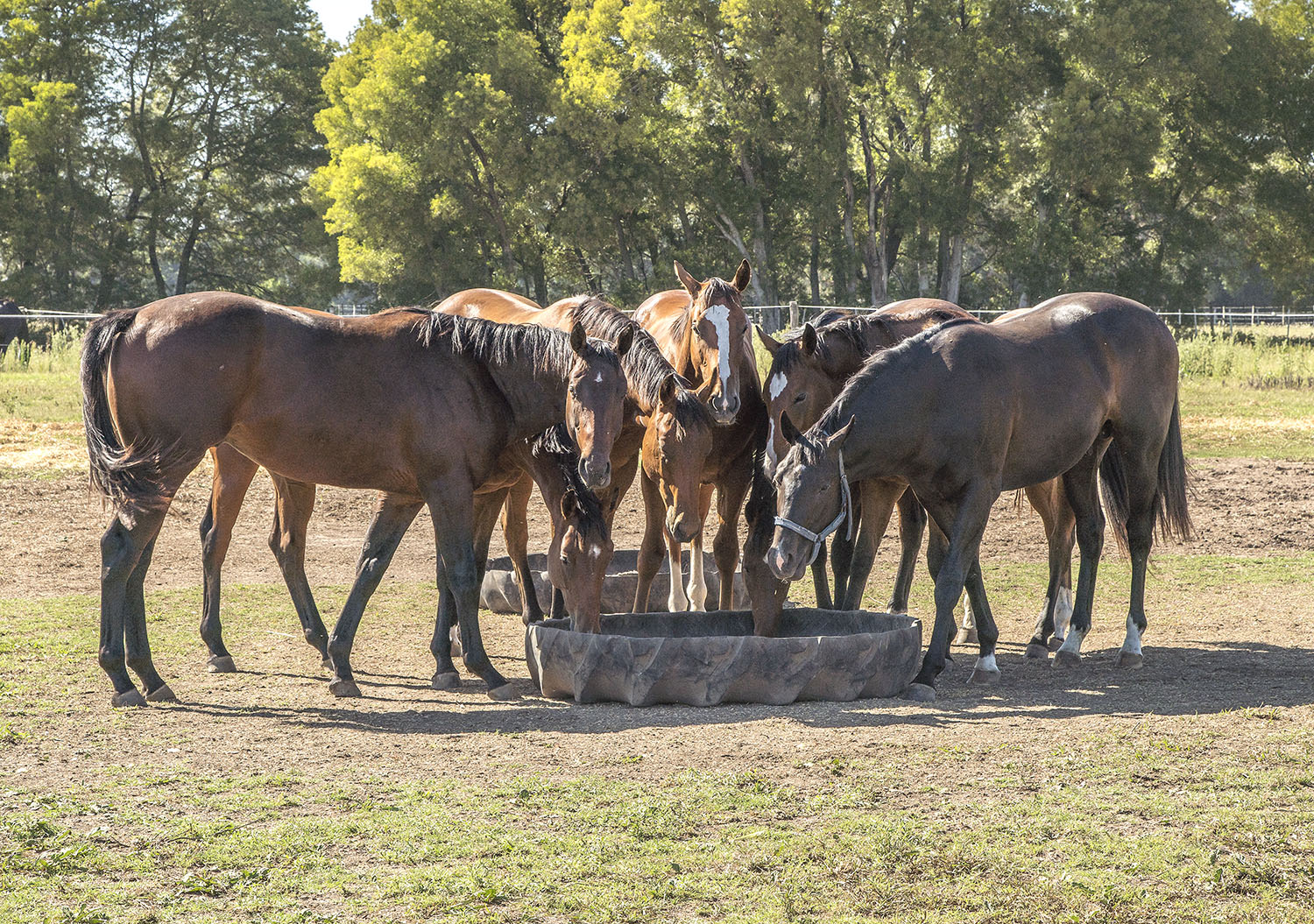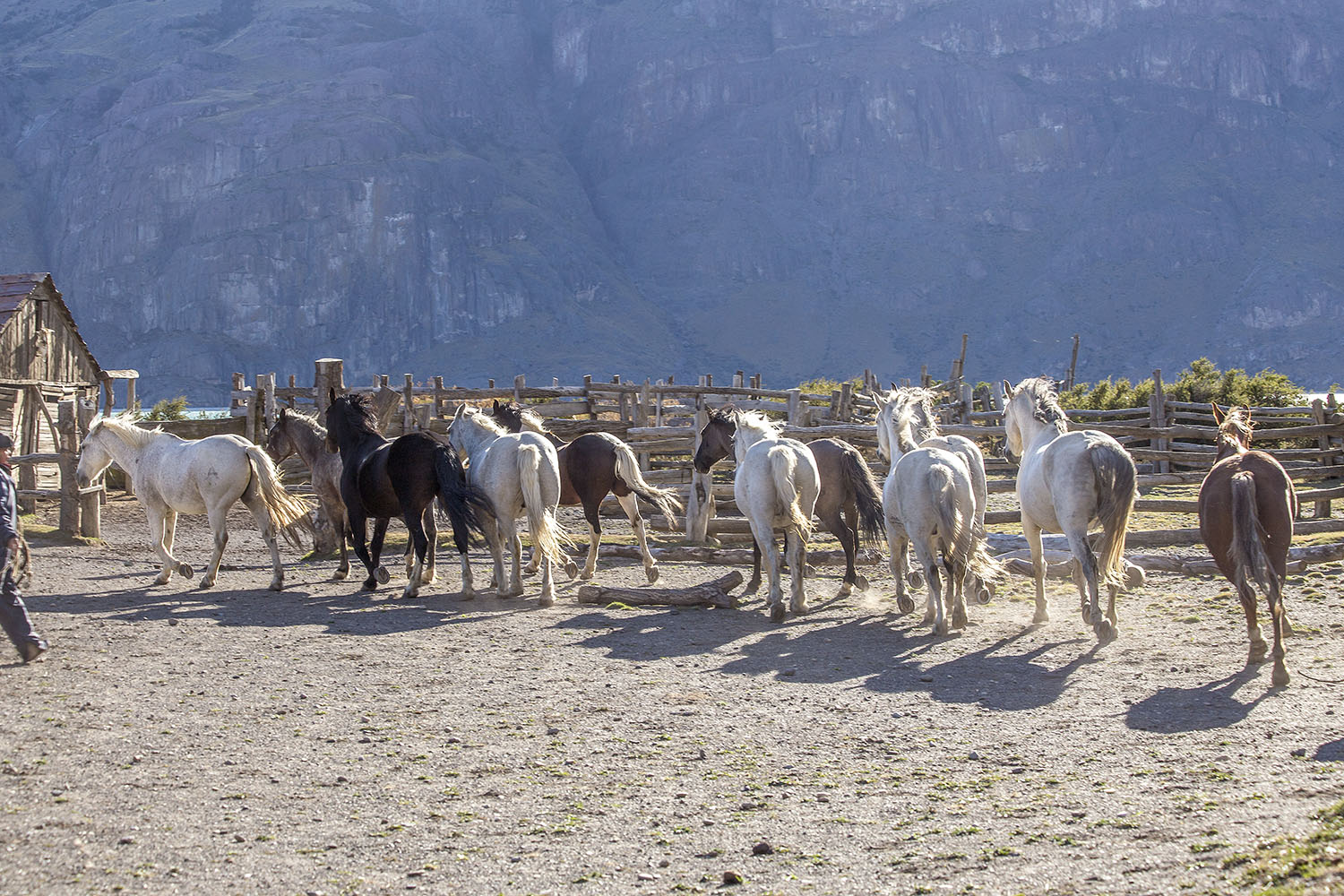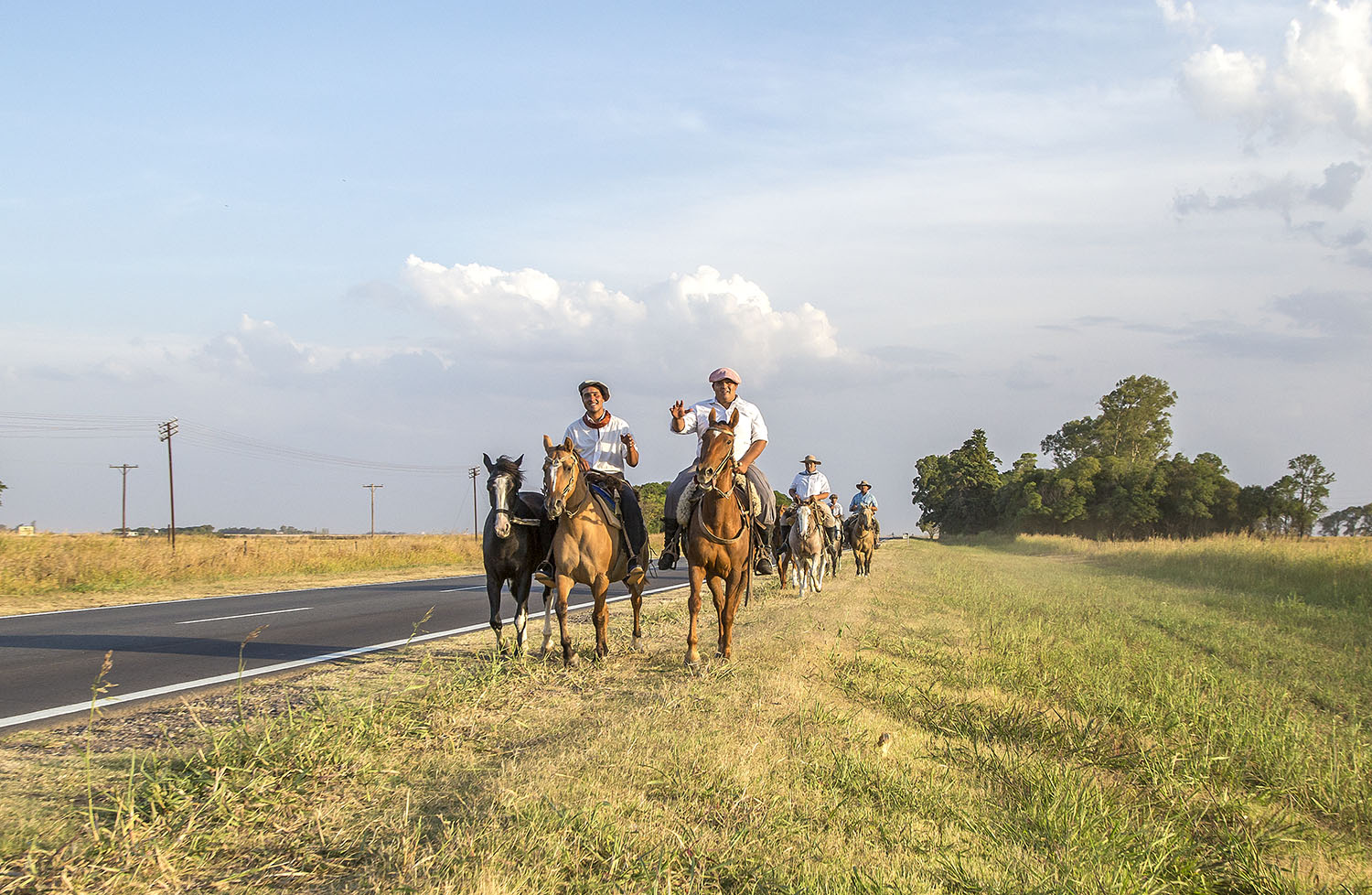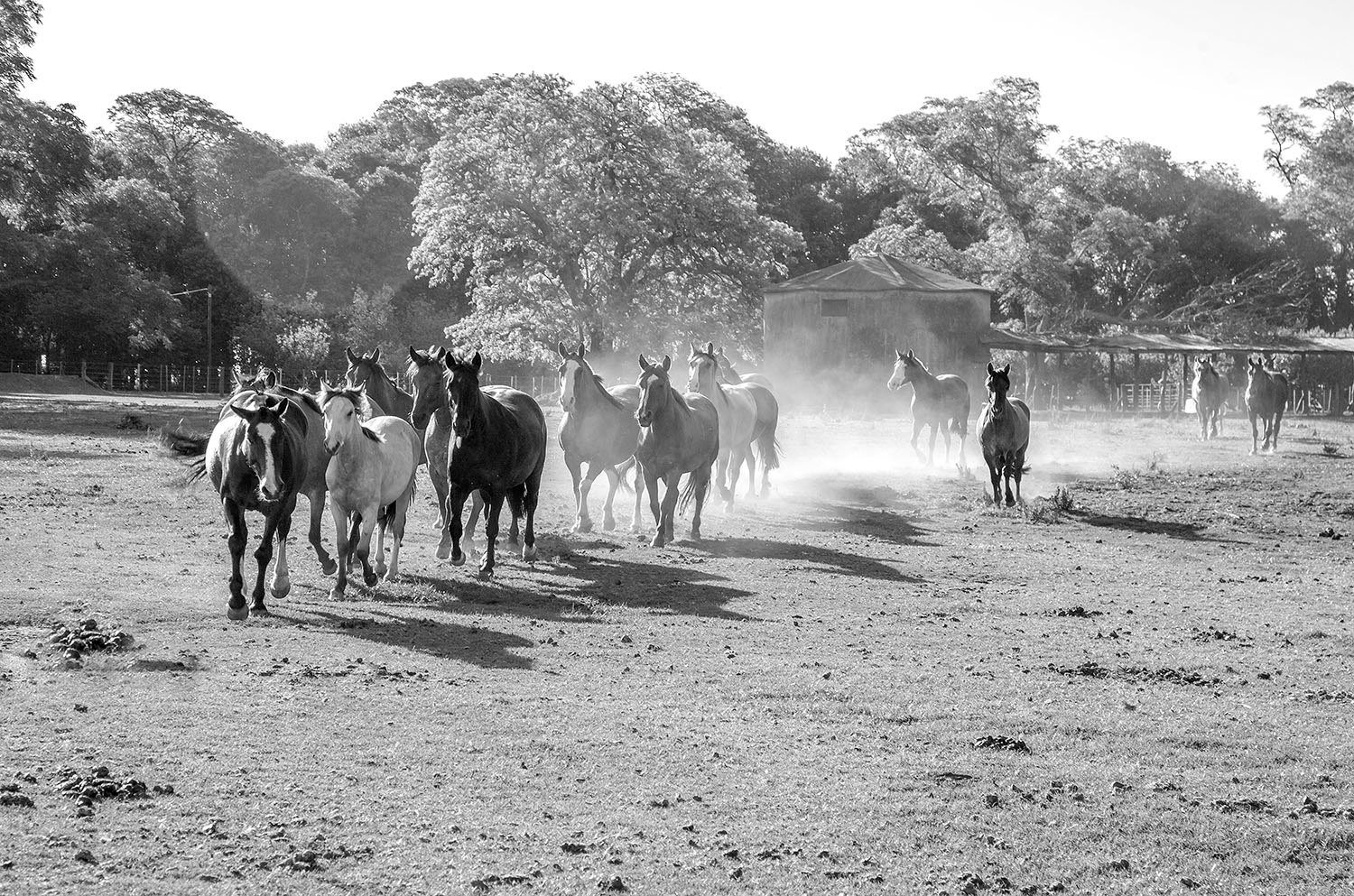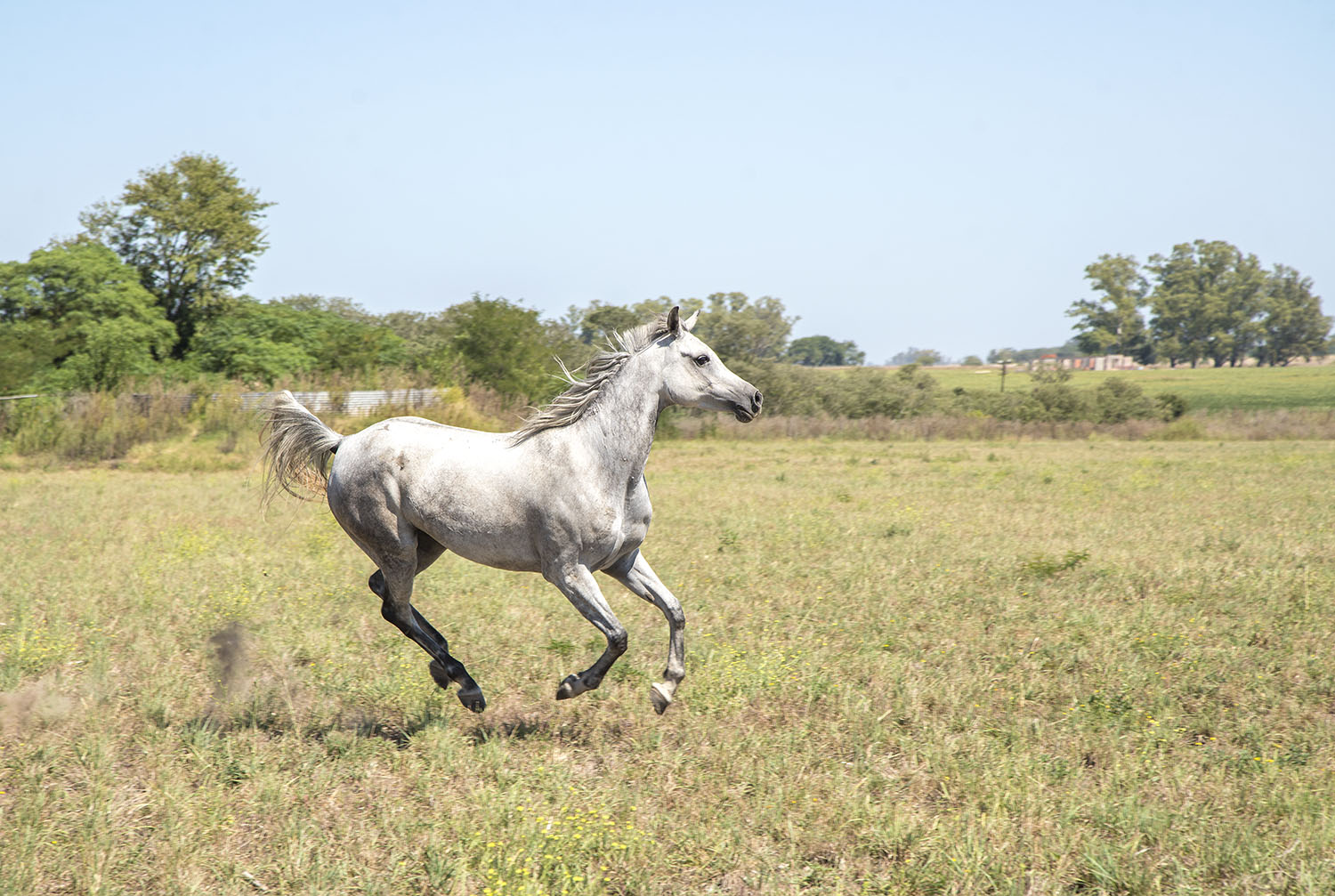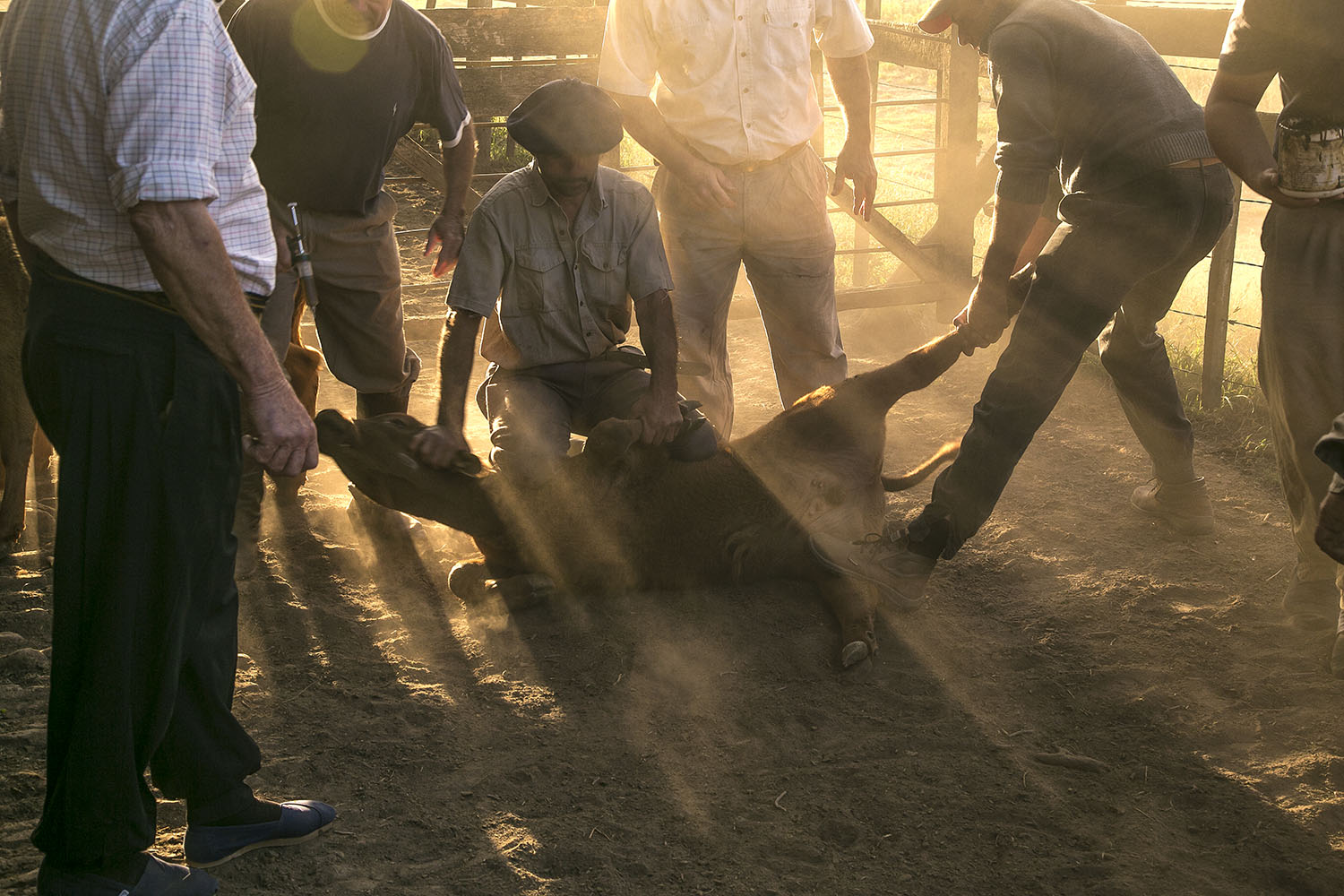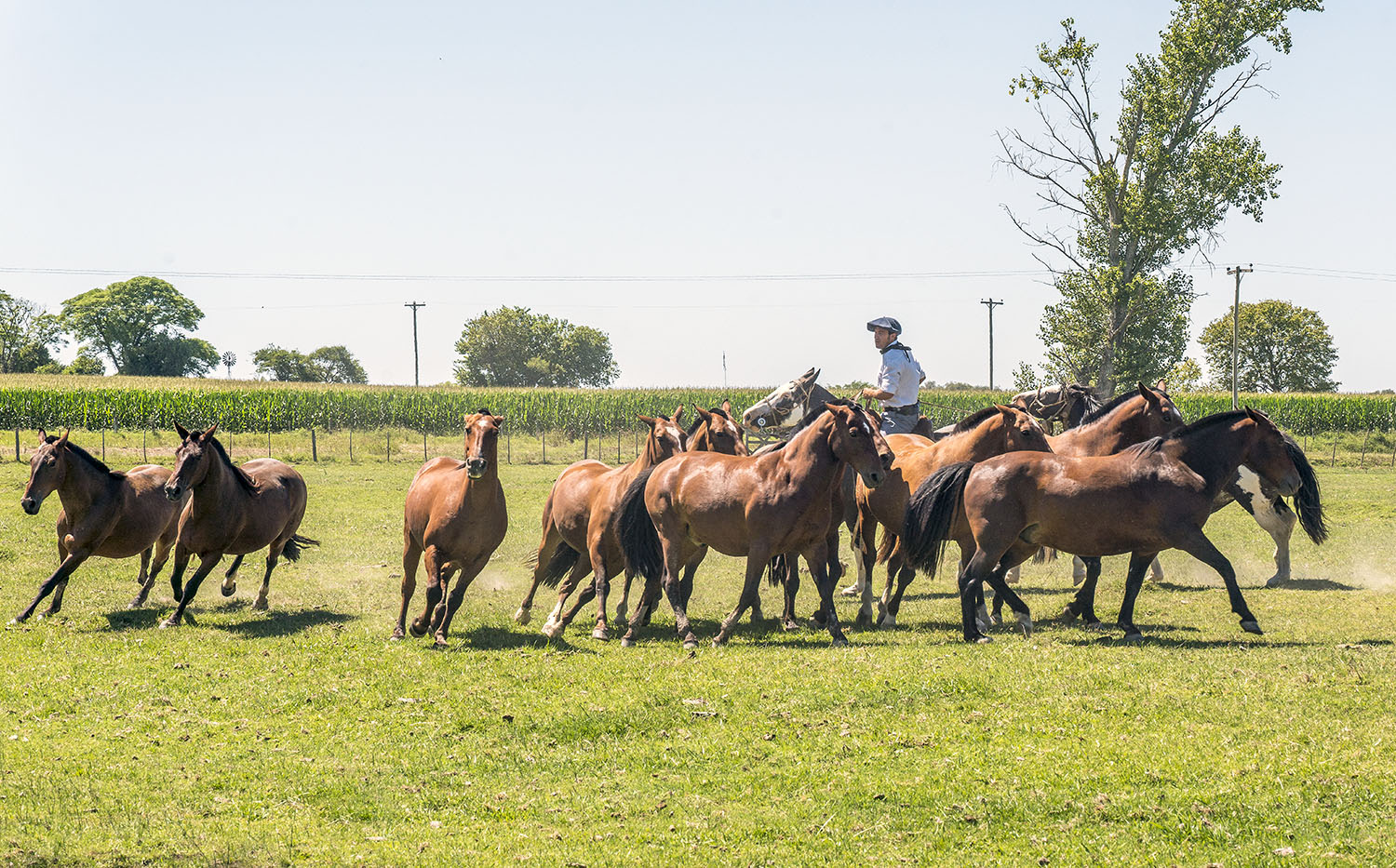Toista ääniraita – Play soundtrack
– Instrumental Milonga – Interpreter Unknown –
– Milonga instrumental – Interprete desconocido. –
– “Con aire de entristecido” (With an air of sadness) – Interpreter Unknown –
Taken from the Folkloric Documentary from Leda Valladares
Lyrics and music: Anonymous
Saturnino Vivanco – the friend who brought me his great selection of unique folklorical music from the Pampas.
> Saturninos YouTube channel <
Saturnino collects and preserves unique folklore music documents.
Lue tarina suomeksi ↓
Read the story in English ↓
Osta kuva
Osta kuva
Osta kuva
Osta kuva
Osta kuva
Osta kuva
Osta kuva
Osta kuva
Osta kuva
Osta kuva
Osta kuva
Osta kuva
Osta kuva
Osta kuva
Osta kuva
Osta kuva
Osta kuva
Osta kuva
Osta kuva
Osta kuva
Osta kuva
Osta kuva
Osta kuva
Osta kuva
Osta kuva
Osta kuva
Osta kuva
Osta kuva
Gauchot & Hevoset
“Los hermanos sean unidos porque esa es la ley primera; tengan unión verdadera en cualquier tiempo que sea, porque si entre ellos pelean los devoran los de afuera“. (Veljet olkoot yhtä koska se on ensimmäinen laki, pitäkööt aina yhtä, koska jos he taistelevat keskenään, ulkopuoliset tuhoavat heidät.)
“El diablo sabe por diablo, pero más sabe por viejo”. (Paholainen tietää koska hän on paholainen, mutta hän tietää enemmän koska hän on vanha.).
Molemmat lainaukset ovat Jose Hernandezin kirjasta El Gaucho Martin Fierro.
“De mi caballo aprendí que la fuerza se complementa con la nobleza y la lealtad”. (Hevoseltani olen oppinut, että voimaa täydentävät jalous ja uskollisuus – Gabriel Oliverio
“Maa ei olisi mitään ilman hiekkaa, eikä gaucho olisi mitään ilman hevosta.” Tuntematon
“Ratsastaminen on vapauden lainaamista.” – Helen Thompson
Gaucho on sangen monimutkainen hahmo, vaikeasti määriteltävä olento, joka on käynyt läpi monta aikakautta ilmestyttyään 1500-luvun alussa Amerikan mantereiden ruohoaroille ensimmäisillä Euroopasta saapuvilla siirtolaislaivoilla – joilla tulivat myös hevoset; niitä ei aiemmin täällä ollut.
Näin levisi ratsastajakulttuuri Amerikan mantereelle. Gaucho on “criollo”, eurooppalaisen siirtolaisen ja tämän ratsastuskulttuurin poika.
Gaucho on yleisamerikkalainen yksilö, hänet löytää kaikkialta Amerikan mantereelta, etelästä pohjoiseen, Pohjois-, Väli- Ja Etelä-Amerikasta. Kreolit, “criollot”, ovat eri puolilla Amerikkaa erilaisia, samoin ovat hevoset, mikä johtuu pääasiassa maantieteellisistä, ilmastollisista ja ympäristön olosuhteista, ja tietenkin siirtolaisten erilaisista piirteistä.
Etelän ”criollo” hevonen oli gauchon elinehto, työväline, hänen ainoa omaisuutensa. Jos hevonen katosi tai loukkaantui, gaucho jäi yksin suremaan pampan loputtomalle arolle, ja yksin hän oli avuton ja saattoi jopa kuolla. Hevosensa myötä hän kadotti kaiken paitsi vanhan maineensa, joka korostui elämän julmuudessa ja yksinäisyydessä. Gauchon ja hevosen välinen yhteys oli aina keskeinen.
Gaucho-kulttuuria määrittelevät seuraavat arvot: rohkeus, uskollisuus, vieraanvaraisuus. Niinpä Argentiinassa, Uruguayssa, Chilessä ja eteläisessä Boliviassa sanonta “tehdä gauchada” tarkoittaa jaloa tekoa, hyvää asennetta.
Gauchot osallistuivat myös 1800-luvun alussa hevosineen paikallisiin ja alueellisiin itsenäisyystaisteluihin, joita käytiin valtaajia vastaan.
Jorge Luis Borges, loistava argentiinalainen kirjailija, kirjoitti:
“… Samuel Johnson sanoi, että merimiehen ja sotilaan ammateissa on vaaran arvokkuutta.
Meidän gauchollammekin oli. Hän selviytyi pampalla säässä kuin säässä, monenlaisissa maastoissa ja villeillä maatiloilla. On turhaa määritellä gauchoa etnisesti, unohdettujen valloittajien ja siirtolaisten poikaa, hän oli ehkä mestitsi, ehkä musta tai valkoinen. Gauchona eläminen oli kohtalo. Gaucho oppi aavikon tavat ja vaarat, hänen vihollisiaan olivat alkuasukkaat “malonit”, “pahojen” intiaanien ryhmät jotka väijyivät taivaanrannan varjoissa, jano, villipedot, tuuli ja ruohikkopalot. Sitten kuvaan tulivat myös vapaustaistelut ja anarkia.
… Hän ei ollut seikkailija, suurten neitseellisten maiden tai kultasuonien etsijä, kuten hänen kaukainen veljensä Pohjois-Amerikan villissä lännessä, vaan sodat veivät hänet kauas, ja hän antoi sankarillisesti henkensä mantereen vierailla seuduilla – häntä ajoivat eteenpäin kuvitelmat, joita hän ei kenties oikein ymmärtänyt – vapaus, maa – tai ehkä lippu, tai isäntä. Vaarojen lomassa hänen vapaa-ajan nautintojaan olivat kitara, jota hän viritteli, jutellen pikemmin kuin laulaen, kierros mate-teetä (tunnettu paikallinen juoma) nuotion ääressä. Hän oli tietämättään kuuluisa.
… Vuonna 1856 Walt Whitman kirjoitti: “Näen gauchon ylittävän aron. Näen mestarillisen ratsastajan heittävän lassoaan. Näen pampalla uljaan “criollo”-karjan ajoa.
… Kova elämä pakotti gauchot urheiksi. Heidän johtajansa eivät aina olleet …. ” —
Niin kutsuttu gaucho-kirjallisuus muodostui tämän hahmon ympärille, ja sen pääteema oli sosiaalisen epäoikeudenmukaisuuden vastustaminen. Tämä kulminoitui tunnuskuvalliseen kirjaan El Gaucho Martin Fierro, jonka kirjoitti Jose Hernandez (1872) ; se on Argentiinan kirjallisuuden merkittävimpiä tekstejä. Vähän myöhemmin ilmestyi La Vuelta del Martin Fierro (1879).
Vähän tarkemmin gauchoista:
Gauchon työnimike oli “peon de campo”, maatyöläinen. Sen määritteli kansallisen itsenäisyyden myötä muotoutunut alan hallintojärjestelmä. Maanomistajat olivat isäntiä.
Gauchon elämäntapa oli puolipaimentolainen. Tärkeimmät työtehtävät olivat:
Ajaa karjaa pitkin laidunmaita tai markkinapaikoille kuten Buenos Airesin satamaan.
“La yerra”, joka tarkoitti karjan merkitsemistä omistajan polttomerkillä.
Hevosten kasvatus ja koulutus oli gauchon jokapäiväistä työtä.Nykyisin se on Argentiinassa erittäin arvostettu taito, ja nykyäänkin pidetään kouluratsastuskilpailuja ja –festivaaleja.
Gauchot joivat mielellään mate-teetä, haudutettua kuumaa juomaa, joka valmistettiin koverretussa kupissa ja jota juotiin suodatinpillillä.
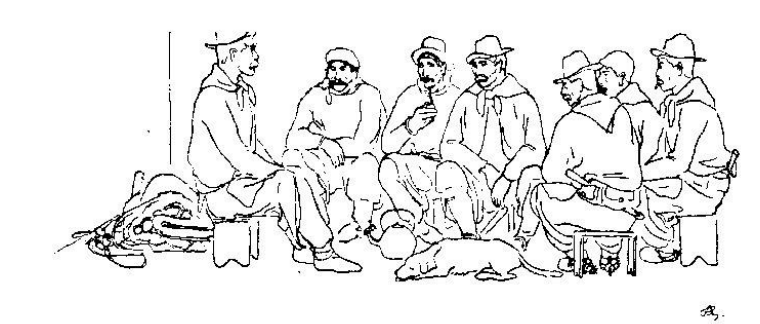
Gauchot juovat matea
Gauchon asuinaluetta on pampa-tasanko, joka geologisessa mielessä on kerrostuneella lietteellä täyttynyttä vesijättömaata. Tämä on tärkeää tietää, koska pampan pinnanmuodostus on “jähmettynyttä merenpintaa”, tasaista kuin biljardipöytä. Koska vuotuiset sademäärät ovat niukat, alueella kasvaa vain matalaa ruohoa eikä kosteutta ole riittävästi metsien kasvuun. Tämän takia gaucho – ja ennen häntä intiaani – on tavallaan paimentolaismerenkulkija vihreällä loputtomalla merellä, “aavikolla” (kuten nimitys kuului 1800-luvulla; myöhemmin istutettiin puita). Gauchon piti suunnistaa auringon ja tähtien mukaan ettei eksyisi.
Gaucho-naista on perinteisesti kutsuttu nimellä “china”, joka tulee sanasta quecha, tyttö.
Gauchon hahmo on Argentiinassa, Paraguayn ja Uruguayn kulttuureissa sekä Rio Grande do Sul –alueella Brasiliassa ja Chilen Patagoniassa maaseudun perinteiden ja tapojen kansallinen ikoni. Gauchot taistelivat itsenäisyys- ja sisällissodissa.
Koska gaucho on maaseudun asukas, hänellä on yhtäläisyyksiä muiden Amerikan mantereen maaseudun ratsastajien kanssa; tällaisia ovat Chilen huaso, meksikon charro,Ecuadorin chagra, Kolumbian-Venezuelan llanero, Amerikan cowboy ja Paraguayn vaquero tai gaucho.
Joillekin paikallisen ylhäisön ja kaupunkiporvariston edustajille 1800-luvulla gaucho edusti “vaarallista villiä” ja “maaseudun rosvoa”, ja gaucho-nimitys oli melkein loukkaus. Kuitenkin monet gauchot saavuttivat ihmisten suosion ja kiintymyksen. Yksi heistä oli suurenmoinen pohjoinen gaudillo Juan Martin de Guemes. .
Gauchot olivat siis ammattimaisia hevosmiehiä, muulinajajia, karjapaimenia ja kouluttajia (1900-luvun alussa oli tavallista, että gaucho-poika aloitti ratsastuksen varhaislapsuudessaan). Lisäksi monet gauchot olivat kuuluisia asuinseutunsa ja sen ilmaston tuntemisesta. Tällaista taitoa kutsutaan nimellä”baqueanos”. Toinen taito oli jälkien seuraaminen: jäljittäjä pystyi seuraamaan ihmiset tai eläimen jälkiä pitkiäkin matkoja.
Gauchon ominaisuudet olivat niin vahvat, että argentiinalaiset säilyttävät niitä edelleen. Suuria maa-alueita omistavat argentiinalaiset, “estancierot”, käyttävät edelleen tyypillistä gauchon asua ja noudattavat näiden perinteitä ja tapoja.
Argentiinalaisilla on perimässään myös “asado”, joka on grillatun lihan syömistä ulkona. Sosiaaliluokasta riippumatta se on perinne, jonka mukaan vieras kutsutaan tapaamaan ystäviä tai perhettä. Matalalla lämmöllä valmistetaan erilaisia pihvejä ja leikkeitä naudanlihasta.
Gauchon vapaa ja yksinäinen elämäntapa jatkui 1700-luvulle asti, jolloin viranomaiset lakkasivat myöntämästä lupia villin criollo-karjan pyydystämiseen (tätä kuvaava termi oli “vaquear”). Syynä oli se, että suuret maatilat jakoivat keskenään pampan maat ja ottivat karjanhoidon itselleen. Gauchon oli sopeuduttava uuteen tilanteeseen.
Vaikka gauchon oli joskus pakko “vaihtaa hevosensa traktoriin ja lassonsa puhelimeen”, hänen legendaariset ominaisuutensa, ylpeys, uskollisuus ja urhoollisuus, elävät Argentiinan maaseudulla tänäkin päivänä.
Rodolfo Medina, 1. huhtikuuta 2021
GAUCHOS & HORSES
”Los hermanos sean unidos porque esa es la ley primera; tengan unión verdadera en cualquier tiempo que sea, porque si entre ellos pelean los devoran los de afuera“. (The brothers be united because that is the first law; have true union at any time, because if they fight each other, the outsiders will devour them.)
“El diablo sabe por diablo, pero más sabe por viejo”. (The devil knows for devil, but he knows more for old).
Both above extracted from the emblematic book El Gaucho Martín Fierro, from José Hernández
“De mi caballo aprendí que la fuerza se complementa con la nobleza y la lealtad”. (From my horse I learned that strength is complemented by nobility and loyalty)
– Gabriel Oliverio
“The land would be nothing without sand, while the gaucho would be nothing without a horse.”
– Anonimous
“Riding a horse is borrowing freedom.”
– Helen Thompson
The gaucho is a very complex figure, a character very difficult to define, who has gone through many eras since his appearance in the central pampas of all America at the beginning of the 16th Century, with the arrival from Europe of the first ships that brought immigrants, as well as the horses, which did not exist here previously.
So, an equestrian culture is born throughout the American continent. The gaucho is the “criollo”, son of the European immigrant and of this equestrian culture.
The gaucho is a Pan American individual, he is found from north to south of the American continent, North, Central and South. “Criollos” (Creoles) are different throughout America, as are the horses, mainly due to different geographical, climatic and environmental conditions, as well as the characteristics of the various immigrants.
The Southern ”criollo” horse became the vital tool of the gaucho, it was all what he possessed in this world. If his horse was lost or lamed, the gaucho, who went alone through the immensity of the Pampas, lost his beloved tool, was left alone, and even died, of loss and of grief. He then lost everything except the old prestige which was exalted by harshness and loneliness. The gaucho-horse bond was always essential.
There is a whole gaucho axiology characterized by the following values: courage, loyalty, hospitality. Hence, in Argentina, Uruguay, Chile and southern Bolivia, the phrase ”make a gauchada” means to have a gesture of nobility, or a good attitude.
The gaucho also participated, at the beginning of the 19th century, together with his horse, in the local and regional wars of Independence against immigrants.
Jorge Luis Borges, the great Argentine writer, wrote:
“… Samuel Johnson said that the professions of sailor and soldier have the dignity of danger.
Our gaucho also had it. He knew in the Pampas and in the blades the struggle with the weather, with an unknown geography and with the wild hacienda. It is useless to define him ethnically, the casual son of forgotten conquerors and settlers, he was a mestizo of an Indian, sometimes black, or he was white. Being a gaucho was a destiny. He learned the art of the desert and its rigors, his enemies were the indigenous “malon” (a group of “bad” indians) that lurked behind the hazardous horizon, the thirst, the wild beasts, the drought, the burning fields. Then also the campaigns for freedom and anarchy came along.
… He was not, like his remote brother from the Far West in North America, an adventurer, a seeker of long virgin lands or gold veins, but wars carried him far and he stoically gave his life, in strange regions of the continent, driven by abstractions that perhaps he did not quite understand – freedom, the country – or by a flag or a boss. In the truces of risk he took care of leisure; his preferences were the guitar that he tuned slowly, the style less sung than spoken, the round of “mate” (the famous local hot tea), next to the wood fire. He was, without suspecting it, famous.
… In 1856 Walt Whitman wrote: “I see the gaucho crossing the plains. I see the incomparable horse rider throwing his long “lazo”. I see on the Pampa the persecution of the brave “criollo” cattle.
… The hard life imposed on the gauchos the obligation to be brave. Their leaders were not always so. …. ” —
The so-called gaucho literature was formed around his figure, whose main thematic axis was the denunciation of social injustice, which culminated in the emblematic book El Gaucho Martin Fierro, by Jose Hernandez (1872), one of the main texts of the Argentine literature, and La Vuelta del Martin Fierro (1879).
————————————————–
A little more specifically about the gaucho:
Regarding his occupation, the labor systems imposed on the gaucho by some landowners after National independence gave shape to the particular patronage regime of the “peon de campo” (land worker).
And as for their way of life, they had a pseudo nomadic style. His main tasks were basically:
To move the cattle along the grazing fields, or to the market places such as the port of Buenos Aires.
“La yerra”, which consists of branding cattle with the owner’s sign.
Horse training was another of his usual activities. Nowadays it is a highly valued skill throughout Argentina and dressage competitions at festivals are still in force today.
Among other characteristics, the gauchos also drank the typical infusion called mate, traditionally prepared in a hollowed-out gourd by sipping the infusion through a light bulb.

His habitat is the Pampean plain, which geologically is an alluvial plain that was filled by sedimentation. It is important to know this since the Pampean topography is a kind of ”embalmed sea”, as horizontal as a billiard table. Due to the insufficient precipitation of the annual rains, only low grass grows, not reaching the humidity for the formation of forests. As a consequence of all this, the gaucho (and before him, the Indian) is a kind of nomadic navigator of a green and infinite sea, ”the desert” (as it was called in the 19 th century, since the existing trees were later planted by man) where he has to be guided by the sun and the stars so as not to get lost.
The gaucho woman has traditionally been called ”china” (from Quecha: girl).
The figure of the gaucho in the Argentine, Paraguayan and Uruguayan cultures, as well as in the Rio Grande do Sul region (Brazil) and in Chilean Patagonia, is considered a national icon of rural tradition and customs. The gauchos fought in the independence and civil wars.
Because he is a country inhabitant, he maintains similarity with other rural inhabitants of the American Continent on horseback, and especially as a rider, such as: the Chilean Huaso, the Mexican Charro, the Ecuadorian Chagra, the Colombo-Venezuelan Llanero, the American Cowboy and the Paraguayan Vaquero or Gaucho.
For a part of the local aristocracy and the urban bourgeoisie of the XIX century the gaucho was a ”dangerous sauvage”, ”rural bandits”, and the word gaucho was almost an insult. However, many gauchos received popular devotion. Like the case of the great northern caudillo Juan Martin de Guemes.
In addition to expert horsemen, muleteers, herdsmen and trainers (until the beginning of the 20th century it was common for male gauchos to start riding horses from early childhood), many gauchos stood out for their knowledge of the territory and its climatic conditions. Such capacity is called ”baqueanos”. Another capacity is that of ”tracker”, one who can follow the footprint or trail of another human being or an animal for several leagues.
So strong were his features that today Argentines continue to maintain the customs of the gaucho from before. The Argentines who own huge lands, the “estancieros”, continue to wear the typical gaucho clothing, their traditions and customs.
Argentines also have the “asado”, the eating of outdoors grilled meat, in their DNA. Regardless of social class, it is a tradition that invites you to meet friends or family. You can enjoy different cuts of beef over low heat.
The free and solitary lifestyle of the gaucho continued until at the beginning of the 18th century the authorities stopped granting permits to “vaquear”, the catching of the wild “criollo” cattle, due to the fact that the great estancias divided the land of the Pampa and took over the cattle ranching. The gaucho had to integrate himself into this new situation.
Although he sometimes had to ”trade his horse for a tractor and his lasso for a telephone,” his legendary traits, such as pride, loyalty and bravery, also remain in the Argentine countryside today.
Rodolfo Medina, April 1, 2021
“The Ministry of Foreign Affairs, International Commerce and Religion – Directorate of Cultural Affairs – informs that the exhibition “Gauchos y Caballos” by the Argentine artist Rodolfo Medina (DNI 10.661.509) that will take place at the AINO Gallery, Helsinki, Finland, from April 10th through May 31st, is considered by this Directorate of high artistic and cultural interest, on account of the artist’s career and work .
This certificate is to be presented to national and/or international authorities upon request, in the city of Buenos Aires, República Argentina, March 30th, 2021.”
